The Secret Life of Machines Episode Rating Graph
Nov 1988 - Mar 1993
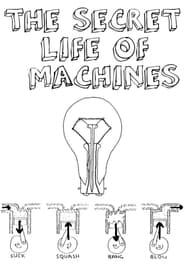
Nov 1988 - Mar 1993
7.3

| E1 | E2 | E3 | E4 | E5 | E6 | |
|---|---|---|---|---|---|---|
| S1 | ||||||
| S2 | ||||||
| S3 |
Browse episode ratings trends for The Secret Life of Machines. Simply click on the interactive rating graph to explore the best and worst of The Secret Life of Machines's 18 episodes.
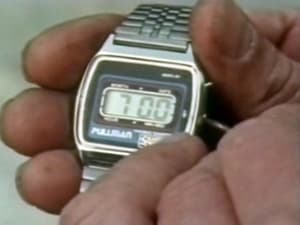
S2 Ep3
8.0
22nd Jan 1991
All clocks and watches work by 'counting' some event which takes a fixed period of time, like the swings of a pendulum. The higher it goes the stronger the pull of gravity and the faster it comes back - so the swings always take a fixed time. The Quartz crystal in a watch vibrates at a fixed speed in a similar way. Episode Contents: Models: A stick. Demonstration of liquid crystal technology with metal coated glass plates and polarized sunglasses. Machines: Many of Tim's large outdoor clocks. A water clock by Rex. Guests: A 400 year old pendulum alarm clock. Various antique pocket watches. Different watch models track the evolution of quartz and digital watches. Films: Goofy 1940's wristwatch commercial ("Hey kids come on a running!") Almost as silly 70's ad for the first bulky LED watch. Extro: Oven door blooper and a melting digital watch.

S1 Ep6
8.0
20th Dec 1988
John Logie Baird, the Scottish inventor, developed an electromechanical TV system in the 1920s and gave frequent public demonstrations. The publicity encouraged EMI to develop a practical all-electronic system, similar to today's. In 1936 the BBC transmitted both systems, but EMI's was judged superior. Episode Contents: Models: TV scanning is demonstrated with a drawing made on many strands of string. A cutaway TV and cards that mimic the screening of a colour TV. Explanation of the simplest electronic components. Machines: Tim's displays at the National Film and Television Museum (UK) Guests: British TV sets from before and after WWII. Films: Zworykin interview. J.L. Baird cartoon. Extro: A mountain of live televisions set on fire.
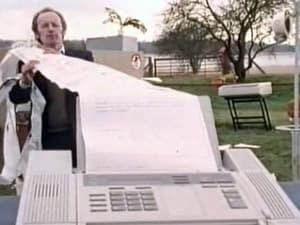
S3 Ep1
7.5
18th Feb 1993
The world's first fax machine was patented in 1843 by Alexander Bain. He came from a remote croft in Caithness in Scotland and, for his early experiments, used cattle jaw bones for hinges and heather for springs. His fax machine was based on an electric clock, which he had also invented. Episode Contents: Models: The "human fax" had Tim and Rex stand at opposite ends of a big field. Tim steps slowly over a sheet printed with giant letters of a message and uses coloured paddles to signal Rex who walks over a similar large sheet with a paint roller, applying paint when he sees the signal. Everything is synchronized with a metronome. The next model uses a board with nail at one each end which closes a circuit in contact with raised metal type. The current causes the nail at the other end to heat a sheet of paper soaked in potasium ferra cyanide. A "string fax" consisting of two drums shows how a picture can be transmitted one line at a time. The "lathe fax" uses a light detector hooked up to a buzzer which is then transmitted through the headset of a normal phone. A lathe at the other end has a sound switch which sends a current through the treated paper at every pulse from the sender lathe. The 2nd "human fax" emulates a digital fax with large grids placed over both Tim and Rex's sheets. Guests: A pair of French Pantelographe de Casell c.1860. A hydrogen balloon used for weather telemetry. A modern fax analyzer. Films: Cartoon life of Alexander Bain (patenter of the fax 150 years ago). Old newsreel featuring early developments in newsgathering. 70's xerox office fax ad. Extro: Tim's homemade Pantelograph.
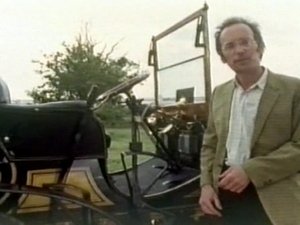
S2 Ep1
7.3
8th Jan 1991
Cars started to become popular in the 1890s. Their success was partly due to the bicycle, which had given people a taste for a personal means of transport. It was also due to Daimler's high speed engine, the first internal combustion engine to be small enough not to make a vehicle ridiculously cumbersome. Episode Contents: Models: A gutted modern body shell. A running car stripped down to the chassis. An exposed brake glows as it's applied. Machines: A mini that drives away from itself! Guests: A penny farthing and other antique bicycles. A 1902 Woolsey. Films: The cartoon life Daimler und Benz. Some quaint english promo films for early cars and lots of assembly line footage. A late 40's ad for a "FUTURAMIC" oldsmobile. A 60's advert for an Austin mini. Citroen promo film showing the toughness of the bodyshell design. Extro: Crushing defeat.
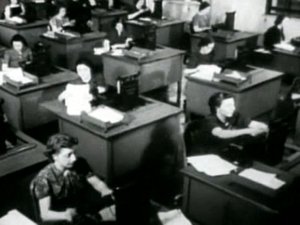
S3 Ep6
7.0
25th Mar 1993
Today, over 50% of jobs are in offices, but 160 years ago the figure was only 1%, and the only office workers were 'Dickensian' clerks. They had considerable status and freedom to organise their work, and kept financial ledgers, but there were no forms, memos, reports, etc. Episode Contents: Guests: The suspended ceiling conceals all the ventilation and lighting systems. A tour of the inner workings of a typical office building. Films: Cartoons about what makes a good office. Gilbreth's time and motion films. An poetic little film from the 40's about progress and change. An excerpt from a goofy 50's educational film regarding the human relations approach to management. Zombies from the 70's demonstrate new computer systems. Extro: An amazingly active office scene where everything (computers, desklamps, binders, papers) seems to be attached to actuators.
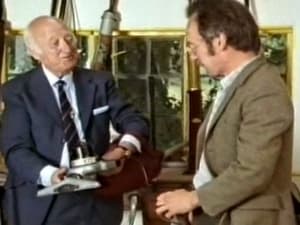
S1 Ep1
6.0
15th Nov 1988
Before the invention of the vacuum cleaner, carpets and upholstery were taken outside and beaten once a year to get the dust out (the 'Spring' clean). Fitted carpets were totally impractical. Episode Contents: Models: Three different kinds (cylinder, upright, hybrid) of cut away vacuums. Homemade solenoid. Plastic bag car jack. Machines: Tim's automated hair raising, eye rolling portrait. Tim's "Common Ground" collecting box which simulates different footprints using a vacuum and a sheet of rubber. Guests: An array of ineffective hand powered vaccuums. Films: Singin hoover ad from the 30's. Extro: Flying vacuums!
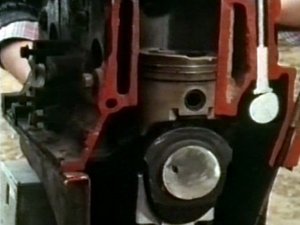
S2 Ep2
6.6
15th Jan 1991
The first internal combustion engine was made by a Frenchman called Etienne Lenoir in 1859. He simply modified a steam engine to suck in and ignite the inflammable gas from his gas lights. Unfortunately the explosions were very violent and the engine was very inefficient. Episode Contents: Models: A gasoline powered lager can mortar. A cutaway model shows the fundamental features of the engine: piston, valves, etc. Machines: An odd little vehicle with a hydraulic life made for a tv show. Guests: A tiny model airplane engine shows amazing power/size ratio. A Hornsby Ackroyd (c.1895) engine runs on parafin. Films: 40's promotional clips for car culture... Cartoon lives of Otto and Diesel. Extro: Motor mad disciples carry an offering to Carhenge!

S1 Ep2
7.0
22nd Nov 1988
The earliest form of automatic washing was the nautical practice of towing clothes behind the ship. The combination of agitation and a constant flow of clean water washes the clothes quite effectively. Episode Contents: Models: Solenoid valves and pressure switches explained. Various cut away washing machines and their ingredients: weighted base, heating element, pumps, timer. Machines: A thunder simulator by Tim. A stunt by Rex using a solenoid cannon to roll a car. One of the best of Tim's collecting boxes, the Chiropodist who nods, twiddles her thumbs and then dissapears and tickles your foot (automatic british mickey taking at it's best). Guests: Again, lots of antique specimins (including the canadian shocker!). Industrial washing machines and the way they deal with the eccentricities of a load of water. Extro: A mountain of washing machines.
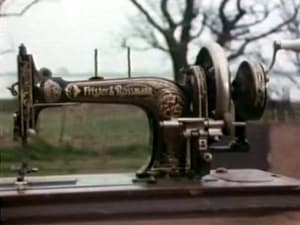
S1 Ep3
7.0
29th Nov 1988
The first patent for a sewing machine was taken out by an English cabinetmaker called Thomas Saint in 1790. It's doubtful whether he actually built his design, because, when one was made from his drawings 100 years later, it had to be extensively modified to work. Episode Contents: Models: A giant human powered lock stitcher demonstrates the basic idea. A cut away singer shows how a crank powers all the basic functions. A demonstration of cams and stepper motors. Machines: Three of Tim's famous collecting boxes: The head scratching curator the rubber-necked guard and the doctor that writes out illegible prescriptions. There are some brief close ups of the construction of these machines. Rex also shows his magical remote controlled suitcase. Guests: A thumb crushing Thimmonier (the 1st practical sewing machine) Many antique decorative sewing machines. Films: The old Singer advert from the 40's is probably the funniest clip in this series. Extro: Say it in thread.
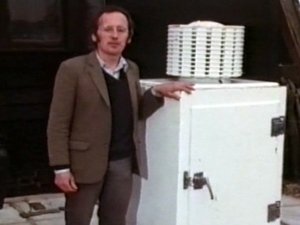
S1 Ep4
7.0
6th Dec 1988
Commercial refrigeration equipment was first developed in Australia, where the winters weren't cold enough to produce much natural ice. A brewery was the first company to commission an artificial ice making plant (in 1865) so cooling Australian lager was the first use of artificial refrigeration. Episode Contents: Models: Disassembling a compressor. Demonstration of thermostat Machines: Rex's homemade air rifle. Tim's elaborate wall mounted water clock. Guests: Early ice box. A turn of the century ammonia refrigerent ice factory. Various early fridges. Archival: GE film from 1935 starring Bette Davis. Hilarious old promo from 1957 with a woman hugging her fridge! Goofy commercial involving an elephant and an old style fridge. Extro: Stop motion fridges.

S1 Ep1
6.0
15th Nov 1988
Before the invention of the vacuum cleaner, carpets and upholstery were taken outside and beaten once a year to get the dust out (the 'Spring' clean). Fitted carpets were totally impractical. Episode Contents: Models: Three different kinds (cylinder, upright, hybrid) of cut away vacuums. Homemade solenoid. Plastic bag car jack. Machines: Tim's automated hair raising, eye rolling portrait. Tim's "Common Ground" collecting box which simulates different footprints using a vacuum and a sheet of rubber. Guests: An array of ineffective hand powered vaccuums. Films: Singin hoover ad from the 30's. Extro: Flying vacuums!

S1 Ep2
7.0
22nd Nov 1988
The earliest form of automatic washing was the nautical practice of towing clothes behind the ship. The combination of agitation and a constant flow of clean water washes the clothes quite effectively. Episode Contents: Models: Solenoid valves and pressure switches explained. Various cut away washing machines and their ingredients: weighted base, heating element, pumps, timer. Machines: A thunder simulator by Tim. A stunt by Rex using a solenoid cannon to roll a car. One of the best of Tim's collecting boxes, the Chiropodist who nods, twiddles her thumbs and then dissapears and tickles your foot (automatic british mickey taking at it's best). Guests: Again, lots of antique specimins (including the canadian shocker!). Industrial washing machines and the way they deal with the eccentricities of a load of water. Extro: A mountain of washing machines.

S1 Ep3
7.0
29th Nov 1988
The first patent for a sewing machine was taken out by an English cabinetmaker called Thomas Saint in 1790. It's doubtful whether he actually built his design, because, when one was made from his drawings 100 years later, it had to be extensively modified to work. Episode Contents: Models: A giant human powered lock stitcher demonstrates the basic idea. A cut away singer shows how a crank powers all the basic functions. A demonstration of cams and stepper motors. Machines: Three of Tim's famous collecting boxes: The head scratching curator the rubber-necked guard and the doctor that writes out illegible prescriptions. There are some brief close ups of the construction of these machines. Rex also shows his magical remote controlled suitcase. Guests: A thumb crushing Thimmonier (the 1st practical sewing machine) Many antique decorative sewing machines. Films: The old Singer advert from the 40's is probably the funniest clip in this series. Extro: Say it in thread.

S1 Ep4
7.0
6th Dec 1988
Commercial refrigeration equipment was first developed in Australia, where the winters weren't cold enough to produce much natural ice. A brewery was the first company to commission an artificial ice making plant (in 1865) so cooling Australian lager was the first use of artificial refrigeration. Episode Contents: Models: Disassembling a compressor. Demonstration of thermostat Machines: Rex's homemade air rifle. Tim's elaborate wall mounted water clock. Guests: Early ice box. A turn of the century ammonia refrigerent ice factory. Various early fridges. Archival: GE film from 1935 starring Bette Davis. Hilarious old promo from 1957 with a woman hugging her fridge! Goofy commercial involving an elephant and an old style fridge. Extro: Stop motion fridges.
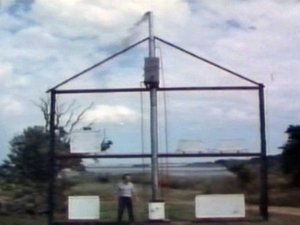
S1 Ep5
7.0
13th Dec 1988
At first Roman houses simply had a fire in the middle of the room (the Latin for hearth is focus). But they probably had trouble with smoke as the Latin for living room is atrium (from ater meaning black). By about 400AD the Romans had perfected a form of central heating. The fire was lit outside in a furnace with hot air ducts under the floors and in the walls. Episode Contents: Models: Trying to start a fire with an electric drill. A Norman chimney vs a proper one. A life size 2 dimensional house model with radiators and boiler. A glass radiator. A balanced flue. Machines: Jacob's ladders by Rex. Guests: Solid fuel, oil and natural gas boilers. Films: Yet another silly 40's promotional film, this one for the Ascot gas boiler. Extro: The model house springs a leak.

S1 Ep6
8.0
20th Dec 1988
John Logie Baird, the Scottish inventor, developed an electromechanical TV system in the 1920s and gave frequent public demonstrations. The publicity encouraged EMI to develop a practical all-electronic system, similar to today's. In 1936 the BBC transmitted both systems, but EMI's was judged superior. Episode Contents: Models: TV scanning is demonstrated with a drawing made on many strands of string. A cutaway TV and cards that mimic the screening of a colour TV. Explanation of the simplest electronic components. Machines: Tim's displays at the National Film and Television Museum (UK) Guests: British TV sets from before and after WWII. Films: Zworykin interview. J.L. Baird cartoon. Extro: A mountain of live televisions set on fire.
The first episode of The Secret Life of Machines aired on November 15, 1988.
The last episode of The Secret Life of Machines aired on March 25, 1993.
There are 18 episodes of The Secret Life of Machines.
There are 3 seasons of The Secret Life of Machines.
No.
The Secret Life of Machines has ended.